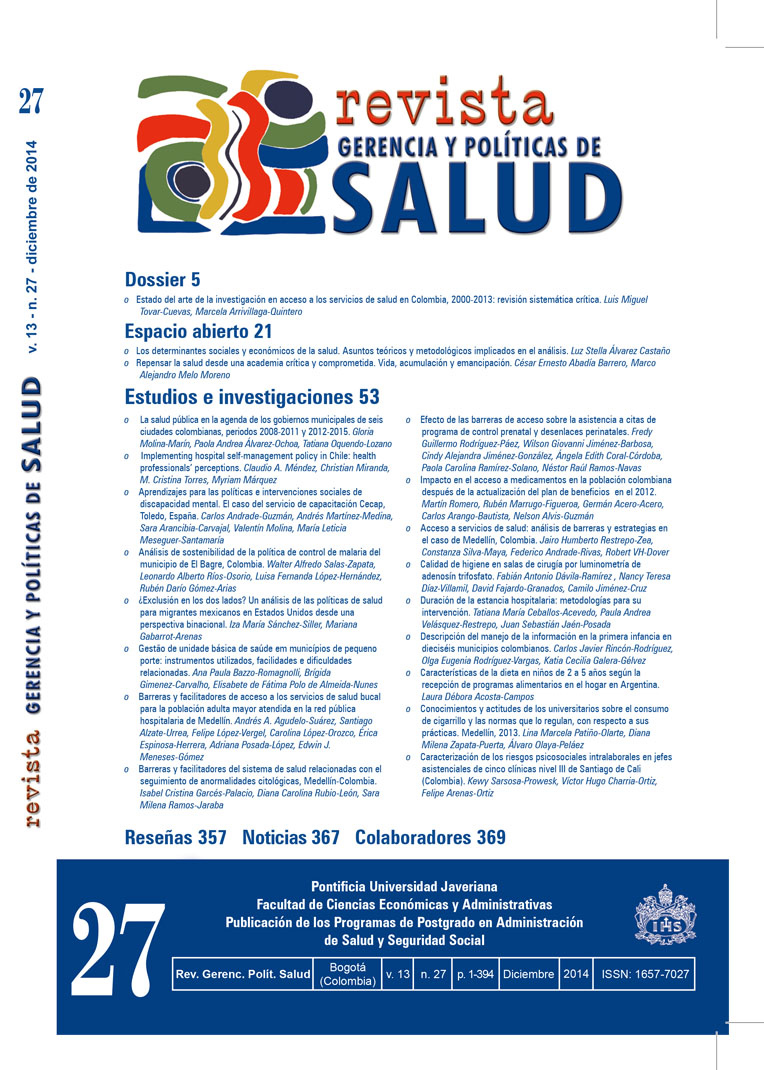Abstract
analizar las características de la dieta en niños argentinos de 2 a 5 años que reciben intervencionesalimentarias en el hogar, en el año 2005. Métodos: se analizó la Encuesta Nacional de Nutrición y Salud(ennys). El muestreo de la ennys fue probabilístico, estratificado por conglomerados, n=7046. Se utilizóla metodología Propensity Score Matching (psm) para la constitución de grupos comparables de niños quereciben y no reciben intervenciones alimentarias en el hogar. Se analizó el consumo de macro y micronutrientes,energía, proporción de energía destinada a cada tiempo de comida y grupos de alimentos. Resultadosy conclusiones: se observó un menor consumo de energía y calcio, y una mayor proporción de energíaproveniente de cereales, en los niños que reciben intervención alimentaria en el hogar; lo que indicaría quelos niños que reciben programas alimentarios no presentan una mejor calidad de la dieta.Copyright notice
The Journal Management and Health Policies is registered under the Creative Commons Recognition 4.0 International license. Therefore, this work can be reproduced, distributed and publicly communicated in digital format, provided that the name of the authors and the Pontificia Universidad Javeriana are recognized. It is allowed to quote, adapt, transform, autoarchive, republish and create from the material, for any purpose (including commercial), provided that authorship is properly acknowledged, a link to the original work is provided and if changes have been mad. The Pontificia Universidad Javeriana does not retain the rights over published works and the contents are the exclusive responsibility of the authors, who preserve their moral, intellectual, privacy and publicity rights.
The endorsement of the intervention of the work (revision, style correction, translation, layout) and its subsequent disclosure is granted through a license to use and not through a transfer of rights, which means that the journal and the Pontificia Universidad Javeriana disclaims any liability that may arise from ethical misconduct on the part of the authors. As a result of the protection provided by the license for use, the journal is not obliged to publish retractions or modify the information already published, unless the erratum arises from the process of editorial management. The publication of contents in this magazine does not represent royalties for taxpayers.


